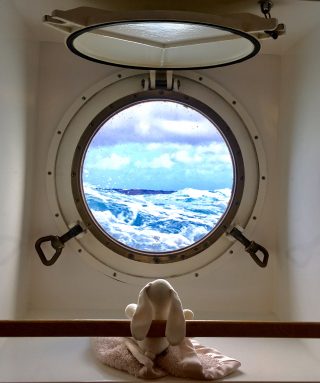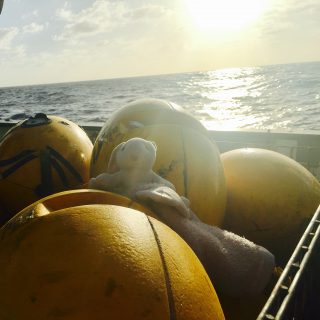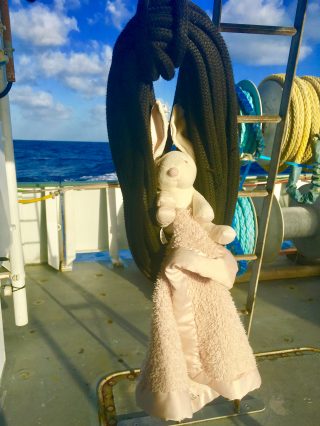For more than three billion years, microorganisms have served as engines of Earth’s biosphere, driving essential biogeochemical cycles that shape planetary habitability. Exploration of the sea over the last 40 years has resulted in astounding discoveries about the extent and diversity of life in the deep ocean, pushing our understanding of the intimate connections between the biosphere and geosphere to the extremes, including the discovery of chemosynthetic ecosystems at hydrothermal vents and active microbes buried in sediments, kilometers beneath the seafloor. In fact, the global ocean comprises Earth’s biggest microbiome, with at least half of the ocean’s microbial biomass occurring beneath the ocean floor.
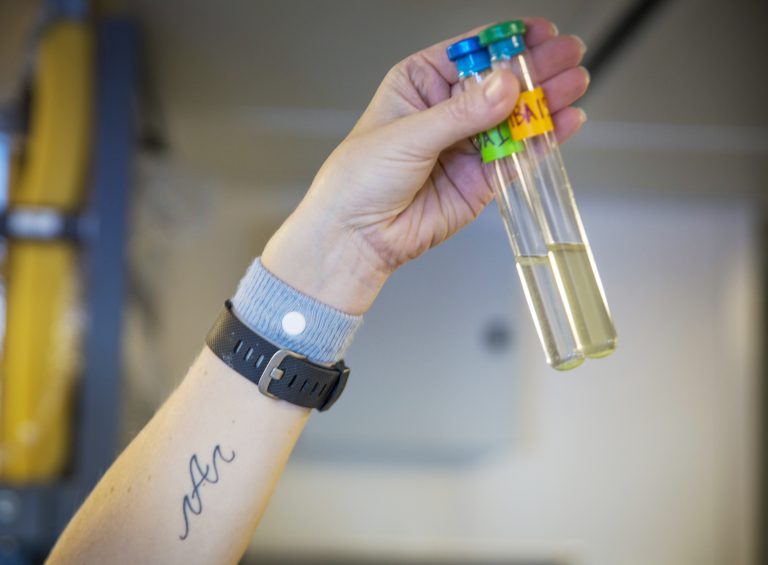
It Starts with a Microbe
Since the discovery of hydrothermal vents in the late 1970s, it has been shown that microbes are ubiquitous in and around hot and warm seafloor vents driven by volcanic heat. Microbes have the ability to capture energy from a huge range of chemical processes, and many of the microbes at deep-sea hydrothermal vents do not need sunlight or oxygen to survive. Some live off of sulfur, hydrogen, or iron, while others produce methane. Many of these organisms fix their own carbon from the carbon dioxide being emitted in vent fluids, and they in turn serve as a carbon source for the larger creatures often seen at deep-sea vents, like tube worms or mussels. These microbes are considered the primary producers at vents, providing energy for all other life forms found there. This is a fundamentally different ecosystem than the photosynthetic light-driven ecosystem that most of us are familiar with at the surface of the ocean or in our backyard gardens.
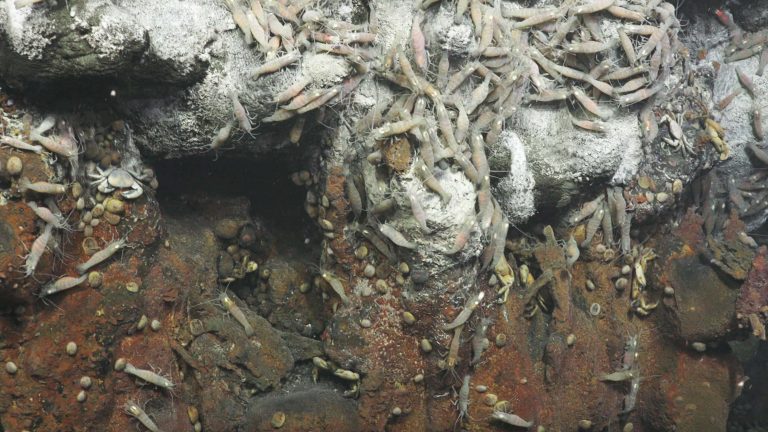
Other microbial members of the hydrothermal vent community are heat-loving, or thermophilic, meaning they grow at very high temperatures, from a “mild” 40 °C (104 °F) all the way up to 121 °C (250 °F)! My research focuses on these high temperature organisms and how they interact with the complex and dynamic geochemical vent environment. We are especially interested in the subseafloor microbial community. The circulation of hydrothermal fluids and seawater occurs within the upper 500m of porous oceanic crust and provides a rich environment for microbial growth beneath the seafloor. To access this “invisible” environment, we collect hydrothermal vent fluids as a window into the subseafloor habitat. The Mariana Back-arc offers a unique opportunity to study the microbial communities at a very deep and geologically distinct mid-ocean ridge, and compare it to more well-described, shallower (1-2 mile deep) systems.
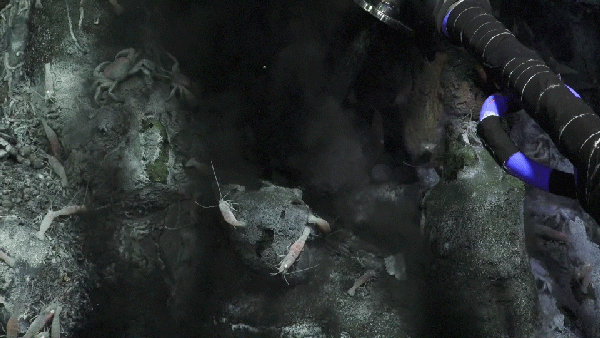
Bringing the Microbes ‘Back to Life’
Based on previous work at other mid-ocean ridges, I brought a suite of tools and experiments to probe the microbial communities in the venting fluids. First, I’m trying to bring these microbes “back to life” in the lab, using special growth media, ovens, and a variety of deep-sea ingredients, including sulfur, hydrogen, and high temperature, to prod them into growing. Already I’ve seen a few tubes showing growth, and studies on land will confirm “who they are” and how they make a living down there. But because many vent organisms are difficult or nearly impossible to culture, we will also use molecular-biology DNA and RNA-based approaches to study the microbial community. This includes direct approaches for determining the microbial diversity, as well as more advanced genomic approaches that allow one to determine the genetic and functional composition of the microbial community- e.g. both who they are and what they are doing. Most of those samples get frozen on board and will be sequenced and analyzed when I return to the lab on land. Finally, I designed a number of experiments to examine the consumption of carbon by microbes and the influence of temperature and hydrogen on these important metabolic processes. That means I have been taking fluid samples, mixing them with different tracers of activity, and then “killing” the experiment at various time points. We won’t know those results until we get back on land either, so I’ll be returning to Cape Cod with a few coolers full of samples to keep me occupied for the next few months.
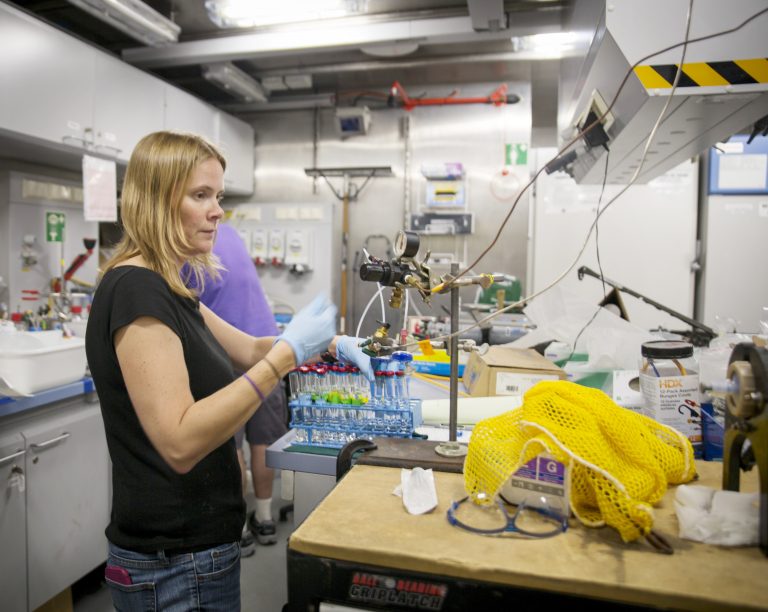
From the Deep Ocean to Deep Space
My own interest in hydrothermal vent microbial communities spans much further than simply understanding the bottom of the ocean. Microorganisms form the foundation of many natural product-based drugs, for example, with organisms from soils and coral reefs playing an important role in drug discovery efforts. Screening of the diverse and unique microbes from hydrothermal vents represents a potential reservoir of discovery. In addition, thinking outside the (Earth) box, it has been hypothesized that life may have originated and evolved near deep-sea hydrothermal systems, and that organisms currently living in these likely analogues of early habitats may still harbor characteristics of early life. Microbes unique to this environment could provide insight into metabolic processes, strategies for growth, and survival of life forms in the subsurface of solar bodies with a water history. Jupiter’s satellite Europa may harbor a liquid ocean with life-supporting hydrothermal systems beneath its icy shell, and Saturn’s moon Enceladus has a “plume” derived from subsurface liquid water that is known to contain organic carbon, nitrogen, and other energy sources. With a sample size of only one, the search for life beyond Earth must begin with life as we know it on Earth. The deep sea, hydrothermal vents, and the subseafloor are great places to begin that search.
Follow Julie on twitter @JulesDeep for tales of the sea, and the next chapter in the story of the microbes of the Mariana Back-arc.
